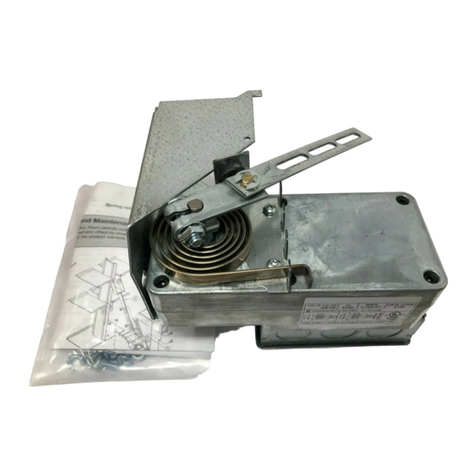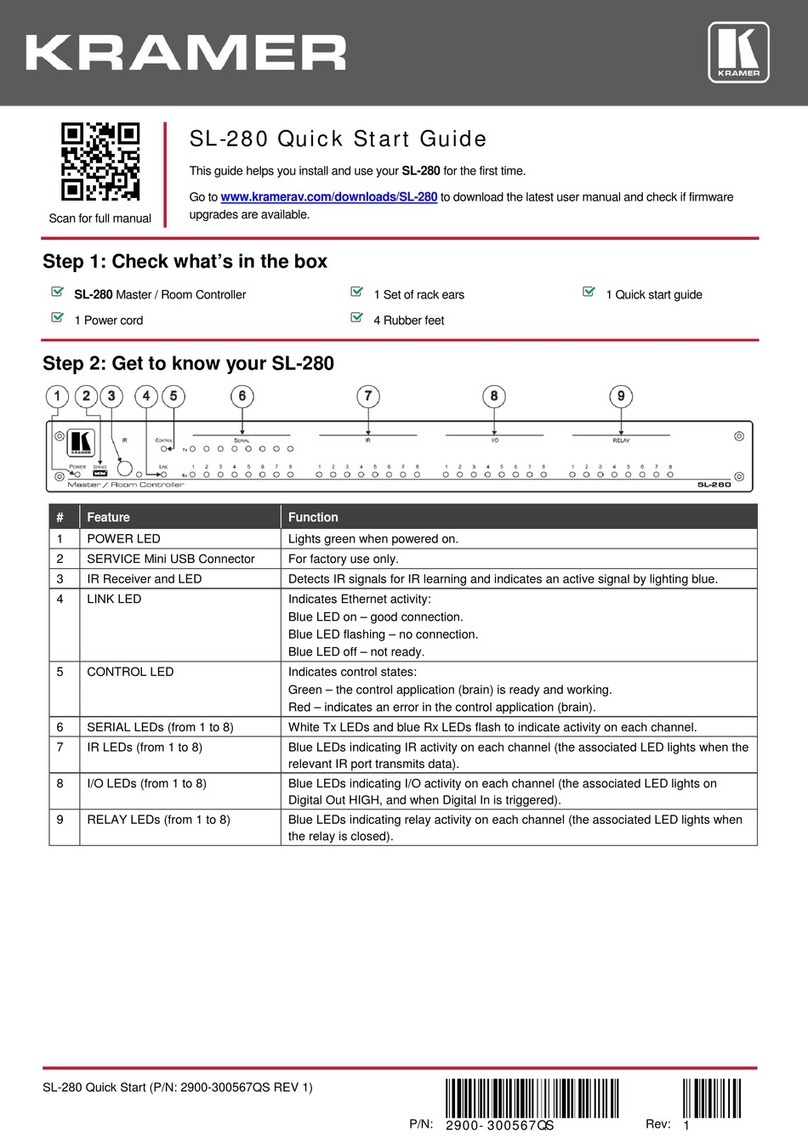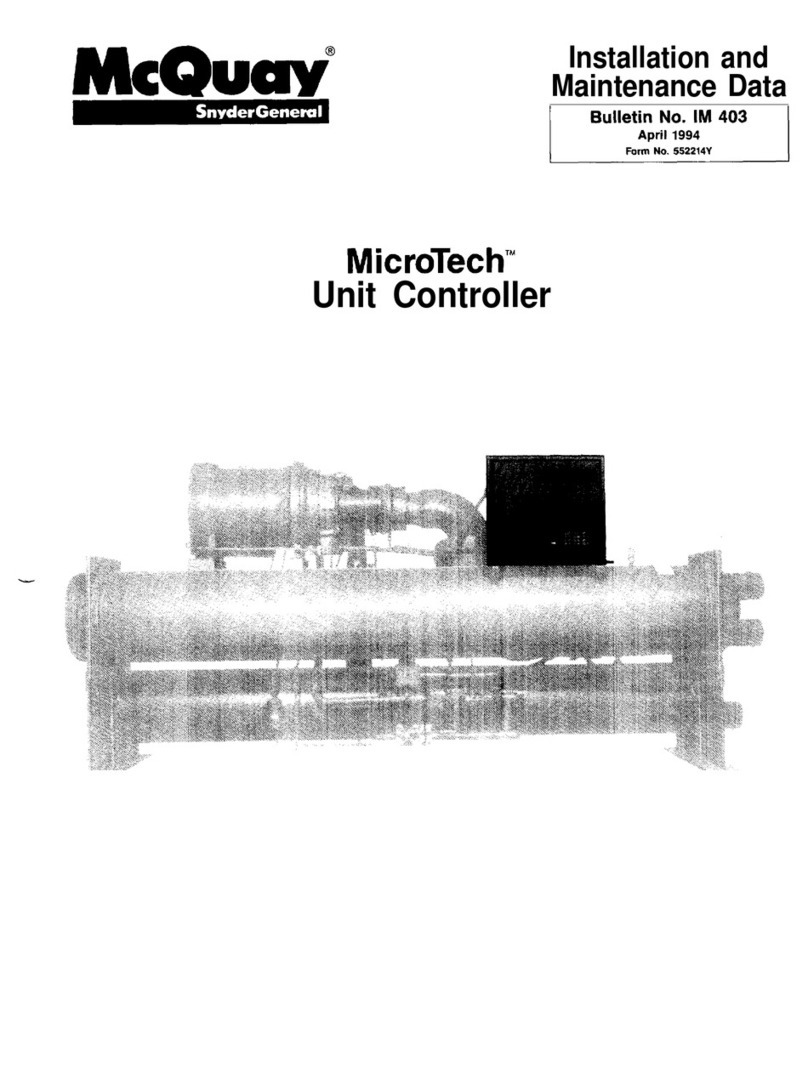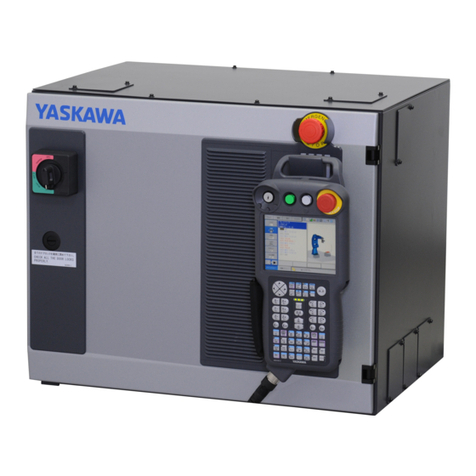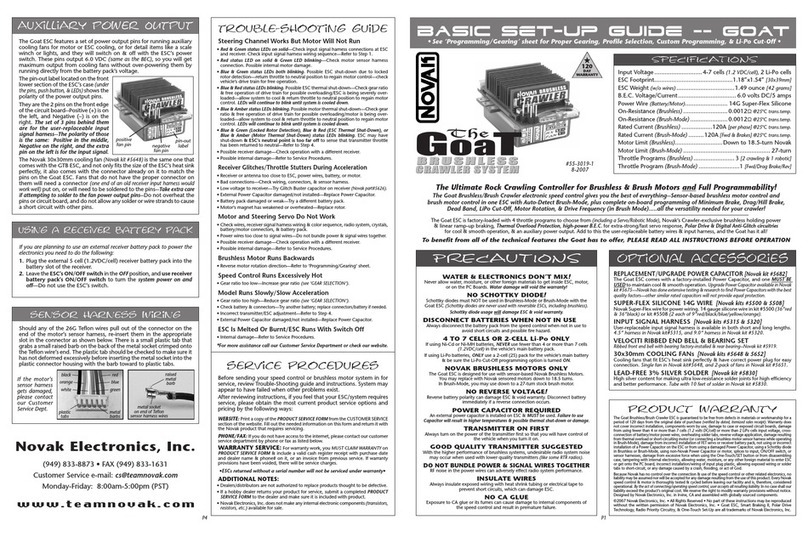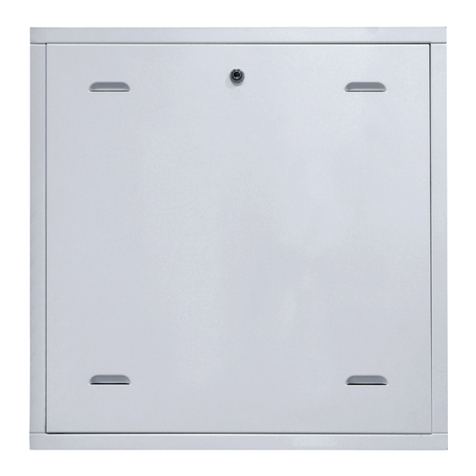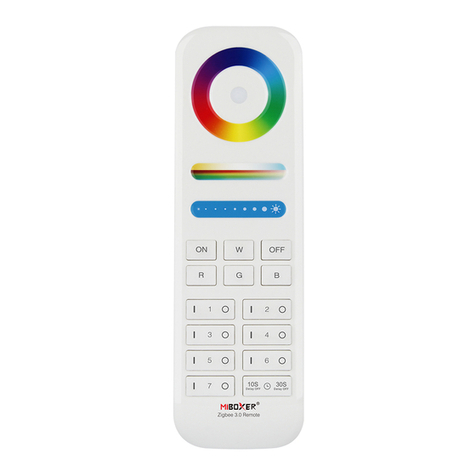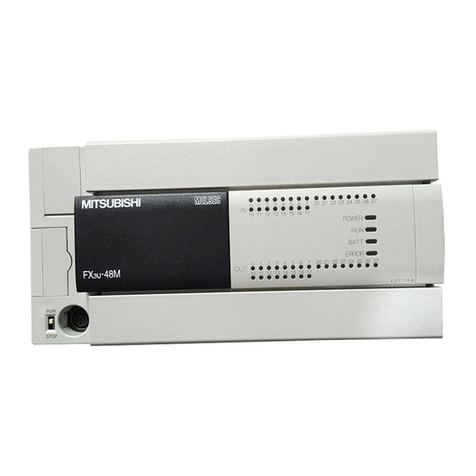Chemline Q Series User manual

INSTALLATION AND MAINTENANCE INSTRUCTIONS
For Chemline A- & Q-Series Actuator with Digital (AC) Positioner
General:
The Digital High-performance position AC
Controller is designed to control quarter-turn AC
actuators, providing 450 points of resolution to
those actuators ranging from 2 seconds to 120
seconds and rated for 25% duty or more. The DHC
has many automatic advanced features that will
enhance any actuator while making it easy to
install and set up.
The simple 3-button control is used to configure
all parameters the unit needs for a wide variety of
applications, and allows the open and closed
positions to be easily set for direct or reverse
action without any rewiring. The unit can be
configured for various command types (4-20 mA,
1-5 VDC, 0-5 VDC, 0-10 VDC or digital
commands) and its default operation upon loss of command signal.
Various option modules are easily plugged into the unit, providing other features such as position feedback
signal (current or voltage), auxiliary switches, fault relay contact, or digital communications. A wide range of
data is accessible through a digital communications module, providing additional control or information. In the
simplest application, only the closed and open positions need to be set and the unit automatically and
continuously sets all other parameters when placed in the AUTO mode.
Features:
•Positions to ± 0.10 with quarter-turn actuators ranging from 2 seconds to 90 seconds.
•Adaptive control feature continuously adjusts for load and actuator conditions, eliminating calibration
procedures and auto-cal operations.
•3-button control provides easy setup and eliminates the need for instrumentation.
•Polarity detection feature allows direct or reverse acting operation without re-wiring.
•Electronic brake feature can eliminate the need for a mechanical brake in many applications, and
extends mechanical brake life when used.
•Stall detection feature protects actuator motor from a stall condition.
•Automatic duty cycle control feature prevents shutdown of a process due to a thermal overload of the
actuator motor, and allows actuators rated for 25% duty or more to be safely used.
•Operating temperature range of 00 to 600C.
05/24/06 page 1/12

__________________________________________________________________CHEMLINE
Calibration & Adjustment Instructions A- & Q- Series Actuator w/Digital Positioner
Requirements:
CAUTION: These units are intended for mounting in an appropriate enclosure to avoid electrical shocks. High
voltages are present on the outside of the unit when power is applied. AC power should be disconnected prior to
any wiring of these units. A heater/thermostat should be used where condensation may occur. Proper voltage
must be supplied or resulting damage to the actuator and/or the positioner could ensue.
The digital positioner is rated for motors with up to 5A running currents and comes in three versions to
accommodate different voltage applications (110VAC, 220VAC and 24VAC). The unit is easily mounted with
2 screws and is equipped with removable screw terminals for easy field wiring.
QuickCal Procedure:
The following is a quick calibration procedure only. Please read the following pages to ensure that ALL of the
selectable features are understood and selected if required.
1. With AC power to terminals #1 (neutral) and #2 (hot) at location J2, push MODE button until
“MANUAL/FB POT CAL” LED is illuminated.
2. Use arrow buttons (▲and▼) to position the actuator to mid-stroke.
If LED is solid, proceed to step 4.
3. Rotate potentiometer gear until LED is no longer flashing, but on solid. Keep in mind that the LED will
flash at a slower rate when farther away from mid-stroke and at a faster rate when closer to mid-stroke.
4. Push MODE button until the “CLOSE” LED is illuminated. Use arrow buttons (▲and▼) to drive the
actuator to the closed position.
5. Push MODE button until the “OPEN” LED is illuminated. Use arrow buttons (▲and▼) to drive the
actuator to the open position.
6. Push MODE button until the “COMMAND TYPE” LED is illuminated. Use arrow buttons (▲and▼)
to select the appropriate signal (4-20 mA, 1-5 VDC, 0-5 VDC or 0-10 VDC).
7. Push MODE button until the “LOSS OF COMMAND” LED is illuminated; this setting drives the
actuator to a predetermined position upon loss of command. Use arrow buttons (▲and▼) to select the
appropriate position (open, closed or last position).
8. Push MODE button until the “AUTO” LED is illuminated. QuickCal is now complete and the unit is
ready for operation.
9. Connect signal/command wires to terminal #4 (signal ground) and either terminal #5 or #6 (depending
on command signal) at location J2.
05/24/06 page 2/12

__________________________________________________________________CHEMLINE
Calibration & Adjustment Instructions A- & Q- Series Actuator w/Digital Positioner
Power/Signal:
Power is connected to pin 1, 2 and 3 on terminal J2 as shown in the block diagram. The fuse installed on the
unit is rated for the maximum output current that can be safely delivered by the AC outputs. Replacement fuses
must not exceed the maximum rating to prevent damage to the unit.
An appropriate command signal, either 4-20 mA, 1-5 VDC, 0-5 VDC or 0-10 VDC, should be connected to pin
5 or 6, while using pin 4 as the return signal ground. The positioner must be configured for the type of
command signal that is to be used (see header COMMAND TYPE).
Pin 7 provides an auxiliary +5V output, which can be used to connect a command potentiometer. By
connecting one end of a potentiometer to pin 7, the other end to pin 4, and the wiper to pin 6, a local control
knob can be implemented. Pin 8 provides an auxiliary +15VDC output, which can be used to power an input or
output 4-20 mA transmitter.
Actuator:
The actuator motor and feedback potentiometer are connected to terminal J1 as shown in the block diagram.
The motor neutral wire must be connected to pin 2, while one motor winding is connected to pin 1 and the other
winding to pin 3. The feedback potentiometer wiper must be connected to pin 5, while one end is connected to
pin 4 and the other end to pin 6. The polarity detection feature automatically determines which motor winding
to control based on where the open and closed positions are set; this feature also eliminates the need to rewire
the unit for direct or reverse acting applications.
When the ▲and▼buttons are used to control the actuator, the ▲button will turn on the motor winding
connected to pin 1, while the▼button will turn on the motor winding connected to pin 3. See MANUAL/FB
POT CAL for more.
Override:
Terminal J7 provides a simple 2-wire connection that can override the positioner to perform a variety of
external control functions. Using an appropriate interface module, commonly used auto/manual station
switches are easily implemented with low voltage/low current switches. See Special Applications for more
details. The factory-installed jumper between pins 1 and 2 enables normal operation and must be installed if the
external override functions are not used.
05/24/06 page 3/12

__________________________________________________________________CHEMLINE
Calibration & Adjustment Instructions A- & Q- Series Actuator w/Digital Positioner
Mode:
The MODE button is used to select the desired function of operation. When the MODE button is pressed, the
unit will switch to the next function and the appropriate LED indicator will turn on to let the user know which
function is selected. Except for the MANUAL/FB POT CAL mode, the associated mode indicator will be
steady on; for some of the modes, other indicators will flash to indicate specific settings associated with that
mode. Each of the modes is described in more detail in the following sections.
If a 0-5 VDC or 0-10 VDC command signal is used, the LOSS OF COMMAND function cannot be used and
the MODE button will skip over the LOSS OF COMMAND mode (see COMMAND TYPE). When the
OVERRIDE mode is enabled (see OVERRIDE MODE) the MODE button is disabled and the Manual/Pot Cal
indicator will turn on steady.
Adjust up and Adjust down:
The adjust ▲and adjust ▼buttons are used to adjust the setting of any given function. When a function is
selected by the MODE button, the ▲and ▼buttons will affect that function only. Note that the AUTO mode
does not have any adjustable setting, and therefore, the ▲and ▼buttons have no effect. Also, the ▲and ▼
buttons are disabled in the OVERRIDE mode.
Override Mode:
The OVERRIDE mode is not selected by the MODE button and can be enabled at anytime by connecting a
resistance greater than 250 ohms to the Override Input (J7 pin 1 and pin 2). While the OVERRIDE mode is
enabled, the MODE button and ▲and ▼buttons are disabled and the MANUAL POT CAL indicator will turn
on steady to indicate that the unit is being controlled by the Override Input. Shorting J7 pin 1 to pin 2 returns
the unit to normal operation and to the previously selected mode. Note that earlier models may not have
connector J7, and therefore do not have the OVERRIDE mode feature.
Controlling the positioner from the Override Input is accomplished by connecting a specify resistance to select a
specific operation. The table below defines the operation and their associated resistance. See Special
Applications for details on using the Override Input for an Auto/Manual Station.
RESISTANCE OPERATION
>4.3K ohms Off
3.3K ohms ± 5% Latch
2K ohms ± 5% Open
1.2K ohms ± 5% Close
510 ohms ± 5% Stop
05/24/06 page 4/12

__________________________________________________________________CHEMLINE
Calibration & Adjustment Instructions A- & Q- Series Actuator w/Digital Positioner
The OPEN function operates the motor in the open direction as set by the OPEN mode, while the CLOSE
function operates the motor in the closed direction as set by the CLOSE mode. The LATCH function will
maintain the previously selected function; this allows momentary switches to be used for the OPEN and CLOSE
functions. The OFF and STOP functions turn the motor off, which also unlatches the OPEN and CLOSE
functions.
Note that the OPEN and CLOSE functions may work in reverse until the open and closed positions are set by
the OPEN and CLOSE modes. The positioner will automatically turn the motor off when the open and closed
positions are reached. However, if a feedback fault occurs (see FAULT INDICATOR), the motor will be turned
on for a period of 15 minutes in the selected direction. For this reason, limit switches should be used when using
the OVERRIDE mode and should be set to a position acceptable for the application. The 15-minute period can
also be terminated using the OFF and STOP functions. The motor is also automatically turned off if the
positioner detects a stall (see STALL DETECTION). An OPEN or CLOSE operation can be attempted again
after switching to the OFF, LATCH or STOP functions first.
Auto:
The AUTO function is the normal mode of operation of the positioner; all the other functions are used to set up
the unit. While in AUTO, the unit can be controlled by various external signals, some of which can be selected
by the COMMAND INPUT function. When the unit is not in the AUTO mode, all external controls described
below will be disabled.
Once the open and closed positions have been set, the AUTO mode will control the position of the actuator
according to the command input signal. For an input signal of 4 mA (for 4-20 mA input), 1V (for 1-5 VDC
input), 0V (for 0-5 VDC or 0-10 VDC input) or 0% (for digital input), the unit will position the actuator to the
closed position as set by the user. Conversely, an input of 20mA, 5V, 10V or 100% will position the actuator to
the defined open position.
When the positioner is configured to use a 4-20 mA, 1-5 VDC, 0-5 VDC or 0-10 VDC command, the command
signal should be connected to the appropriate pin on terminal J2 – note that the unused input pin must be left
unconnected. When the positioner is configured for a digital command type, an appropriate communications
option module must be installed. A communications module may be installed when using one of the analog
command types and can be used to override the analog command. The AUTO indicator will flash whenever the
communications module is controlling the unit.
Manual/FB Pot Cal:
The MANUAL/FB POT CAL function allows manual operation of the actuator by using the ▲and ▼buttons
without affecting any other settings within he positioner. When the ▲button is pressed, the motor winding
connected to J1-1 is turned on while the ▼button turns on the J1-3 winding. Whether the actuator moves
toward the open or closed position depends on which motor winding is connected to J1-1 and J1-3.
05/24/06 page 5/12

__________________________________________________________________CHEMLINE
Calibration & Adjustment Instructions A- & Q- Series Actuator w/Digital Positioner
The POT CAL feature provides an indication of the feedback potentiometer’s setting. When the
MANUAL/POT CAL function is selected, the Manual/Pot Cal indicator will turn on – it may flash or be steady,
depending on the actuator position. The indicator will be on steady whenever the positioner detects that the
feedback potentiometer is at midrange of its rotation. As the actuator moves, causing the feedback
potentiometer to move away from midrange, the indicator will begin to flash, at a decreasing rate as the actuator
moves further away from midrange.
By using the ▲and ▼buttons to position the actuator to mid-stroke (halfway point between the desired open
and closed positions), the feedback potentiometer can then be adjusted until a steady light occurs. This ensures
that the feedback potentiometer has maximum range to reach the open and closed positions.
Open:
The CLOSE function is used to set the desired closed position; however, prior to doing this, the feedback
potentiometer should be checked for optimum position (see MANUAL/POT CAL), and the limit switches
should be set outside of the operating range (see STALL DETECTION FEATURE). In the CLOSE function,
the ▲and ▼buttons are used to set the actuator to any desired position, and upon pressing the MODE button
(to select the next function, in this case, OPEN) the positioner will retain the setting as he defined closed
position.
Upon selecting the CLOSED function, the positioner will begin moving the actuator to the previously set closed
position; it is not necessary to make an adjustment if the unit has been previously set to the desired position. A
command signal input of 4mA, 0V, 1V or 0% automatically corresponds to the defined closed position.
Closed:
The OPEN function works the same way as the CLOSE function with the exception that the ▲and ▼buttons
are used to set the desired open position. As with the CLOSE function, upon selecting the OPEN function, the
actuator will move to the previously set open position. Once the desired position is set, the positioner will
automatically correspond to a command signal input of 20mA, 5V, 10V or 100% to the open position.
Auxiliary Close Output:
The AUX CLOSE OUTPUT function is used to set an optional output setting that is associated with the closed
position – an appropriate relay option module is required to use this output. The ▲and ▼buttons are used to
set the actuator to a desired position. Whenever the actuator position falls between the defined closed position
and the Aux Close position, the AUX CLOSE OUTPUT indicator will flash. Additionally, the positioner will
turn on a relay output on the optional relay module – the output can be used to drive an alarm or merely act as
an auxiliary limit switch.
Upon selecting the AUX CLOSE OUTPUT function, the positioner will begin moving the actuator to the
previously set position. It is not necessary to make an adjustment if the unit has been previously set to the
desired position.
05/24/06 page 6/12

__________________________________________________________________CHEMLINE
Calibration & Adjustment Instructions A- & Q- Series Actuator w/Digital Positioner
Auxiliary Open Output:
The AUX OPEN OUTPUT function is used to set an optional output setting that is associated with the open
position – an appropriate relay option module is required to use this output. The ▲and ▼buttons are used to
set the actuator to a desired position. Whenever the actuator position falls between the defined open position
and the Aux Open position, the AUX OPEN OUTPUT indicator will flash. Additionally, the positioner will turn
on a relay output on the optional relay module – the output can be used to drive an alarm or merely act as an
auxiliary limit switch.
Upon selecting the AUX OPEN OUTPUT function, the positioner will begin moving the actuator to the
previously set position. It is not necessary to make an adjustment if the unit has been previously set to the
desired position.
Command Type:
The COMMAND TYPE function is used to configure the command signal input for either 4-20 mA, 1-5 VDC,
0-5 VDC, 0-10 VDC or digital so as to match the type of command signal input being used. Upon selecting the
COMMAND TYPE function, the Command Input indicator will turn on steady, while the indictor for the
selected type will flash. Use the ▲and ▼buttons to select the desired input type. The selection will be saved
when the MODE button is pressed, which will also advance the unit to the LOSS OF COMMAND function.
Loss of Command:
When using 4-20 mA, 1-5 VDC or digital input type for the command signal, the positioner will detect when
the command signal is lost or out of range. A loss of command condition is detected whenever the input is
disconnected, the input becomes less than 0.75 VDC or 3 mA, or the input becomes greater than 5.5 VDC or 22
mA. If the positioner detects a loss of command signal, the FAULT indicator will flash and the actuator will be
moved to one of three preset positions: the open position, the closed position, or the position last attained prior
to losing the command signal. The LOSS OF COMMAND function is used to set the desired default position.
When the LOSS OF COMMAND function is selected, the ▲and ▼buttons are used to set the default position.
The positioner indicates the selected default setting by flashing the OPEN function indicator for the open
default position, or it will flash the CLOSE function indicator for the closed default position. When neither
indicator is on, then the “last position” default is selected.
When a 0-5 VDC or 0-10 VDC command signal is used, a loss of command signal cannot be detected.
Therefore, the unit is configured for a 0-5 VDC or 0-10 VDC command signal (see COMMAND INPUT), the
MODE button will not select the LOSS OF COMMAND function.
05/24/06 page 7/12

__________________________________________________________________CHEMLINE
Calibration & Adjustment Instructions A- & Q- Series Actuator w/Digital Positioner
Auxiliary Position Out Cal:
Note that the AUX POSITION OUT CAL indicator also serves as a FAULT indicator. When the indicator is on
steady, the AUX POSITION OUT CAL function is selected. When the indicator flashes, a FAULT condition
has been detected (see FAULT INDICATOR for details). The AUX POSITION OUT CAL function is used to
calibrate an optional feedback transmitter output. An appropriate transmitter option module is required to use
this feature.
When the AUX POSITION OUT CAL function is first selected (by pressing the MODE button while in the
LOSS OF COMMAND function), the CLOSE indicator will flash, and the voltage or current associated with
the closed position will appear at the option module output. If desired, the output can be adjusted (using the ▲
and ▼buttons) to any value from 0 to 10 VDC (for a voltage output) or 0 to 20 mA (for a current output). The
new setting is then associated with the closed position.
Pressing the MODE button again will leave the unit in the AUX POSITION OUT CAL function except that the
OPEN indicator will flash, and the output voltage or current associated with the open position will appear at the
option module output. Like the closed setting, the output can be adjusted to any voltage (from 0 to 0 VDC) or
current (from 0 to 20 mA), and the new setting is then associated with the open position.
Fault Indicator:
The positioner detects various fault conditions that prohibit the unit from controlling the actuator. When any of
these conditions are detected, the FAULT indicator will flash, and the motor outputs are turned off until all fault
conditions have been corrected. If an appropriate relay option module is installed, the FAULT relay output on
the option module will also turn off. A communications option module can read the specific condition(s)
causing the fault. Note that a fault condition DOES NOT disable the motor outputs when manually controlling
the actuator with the ▲and ▼buttons; while useful for troubleshooting, care should be exercised when
operating the motor under a fault condition. The OVERRIDE mode can also operate the motor when a fault
condition exists – see OVERRIDE MODE for details. The various fault conditions are described below.
LOSS OF COMMAND – If the command signal is disconnected or out of range, the fault indicator will remain
on until the signal is reconnected or back in range.
FEEDBACK POT FAULT – A fault condition is detected whenever the feedback signal is out of range (that is,
less than 5%, or more than 95%, of the potentiometer value), or when any of the potentiometer connections are
broken. Normal operation resumes when the potentiometer is reconnected or back in range.
MOTOR 1 STALL – A fault condition is detected when no actuator motion is detected while the MOTOR 1
output is turned on. The fault condition will disable the MOTOR 1 output only, and the fault is cleared when the
positioner detects a motion greater than 1.50in either direction. The fault can be cleared if 1) the command
signal commands a MOTOR 2 operation, 2) manual operation with the ▲and ▼buttons results in a motion
greater than 1.50, or 3) mechanical manual override forces the 1.50motion, provided the mechanical motion is
monitored by the feedback potentiometer.
05/24/06 page 8/12

__________________________________________________________________CHEMLINE
Calibration & Adjustment Instructions A- & Q- Series Actuator w/Digital Positioner
MOTOR 2 STALL - A fault condition is detected when no actuator motion is detected while the MOTOR 2
output is turned on. The fault can be cleared in the same way as a MOTOR 1 STALL (see above).
DOUBLE STALL – Both motor outputs will be disabled if the positioner detects no actuator motion in either
direction. The command signal cannot clear this condition; only manual operation or a mechanical override can
clear the fault. Alternatively, the positioner can be powered off and then on to temporarily clear the fault;
however, this practice should be avoided without permanently correcting the cause of such a fault.
Stall Detection:
The stall detection feature of the positioner (see FAULT INDICATOR) essentially performs a similar function
as commonly used torque switches.
The stall detection feature is useful for detecting when any of the motor wires become disconnected. However,
limit switches employed in actuators essentially disconnect one of the motor windings. The positioner will
detect this as a motor stall. To avoid this condition, the limit switches must be set outside of the operating range
set by the OPEN and CLOSE functions.
Electronic Brake:
The electronic brake feature of the positioner provides highly reliable and accurate braking of the motor, and it
is a key element in achieving high resolution. A mechanical brake can still be used without interfering with the
positioner operation. Mechanical brakes can be useful for providing a holding brake in the event that power to
the actuator is lost.
The electronic brake feature provides the primary braking of the motor, dramatically extending the life of a
mechanical brake. Additionally, the adaptive control feature automatically compensates for changes in a
mechanical brake’s performance due to temperature or age.
Note that the actuator’s limit switches should be set outside of the operating range set by the OPEN and CLOSE
functions. The electronic brake feature degrades in performance if a limit switch is engaged. Limit switches
exhibit wide variations, and the positioner can position the actuator more precisely at open and closed than the
limit switches. A limit switch serves best as a failsafe device to protect against electrical failures in the actuator.
Duty Cycle Control:
The duty cycle control feature allows actuators rated at 25% duty or more to be safely used in automated valve
applications. The positioner accurately monitors the relative heating of the motor and automatically duty-cycles
the unit at a safe level when a process becomes unstable, or if a control loop is not properly set. While the
thermal switch in the motor protects it from overheating, thermal switches can shut down the actuator for ten
minutes or more.
05/24/06 page 9/12

__________________________________________________________________CHEMLINE
Calibration & Adjustment Instructions A- & Q- Series Actuator w/Digital Positioner
The duty cycle control feature allows continuous operation of the motor until it detects an excess heat buildup in
the motor (usually well below the limit of the thermal switch). At that time, duty cycle operation is
automatically enabled and continues until the motor cools enough to resume continuous operation. The duty
cycle period is approximately 2 seconds with an on-time that automatically varies depending on the heating of
the motor. While this slows down the actuator’s operation, it does not impact the resolution performance of the
positioner, and it prevents disruption of a process due to thermal switch shutdown.
Option Modules:
Various option modules can be plugged into the positioner’s option module connector, terminal J3. Option
modules provide additional features such as position feedback signals, auxiliary switch output, or digital
communications. Contact Chemline for more information on available modules. Refer to the diagram below for
installation instructions.
Specifications:
Power requirements: 110VAC, 220VAC, 24VAC
14VA typical (not including output load)
5A TR5 Slo-Blo fuse (replaceable)
Command signal input: Input impedance:
20K ohms (1-5 VDC, 0-5 VDC, 0-10 VDC input)
251 ohms (4-20 mA input)
Loss of command threshold:
<0.75V or >5.5V (1-5 VDC input)
<3 mA or > 22 mA (4-20 mA input)
Feedback signal input: Input voltage: 0 to 2.5 VDC
External feedback potentiometer: 1K ohm
Power supply outputs: +15V OUT (J2-8): 125 mA maximum (not including option module)
+5V OUT (J2-7): 5 mA maximum
AC motor outputs: Off-state leakage current: <15 mA
Maximum load current @ 600C: 5A
Environmental: Operating temp range: -320F to 1500F
Storage temp range: -400F to 1850F
Relative humidity range: 0 to 90 % (non-condensing)
05/24/06 page 10/12

__________________________________________________________________CHEMLINE
Calibration & Adjustment Instructions A- & Q- Series Actuator w/Digital Positioner
Troubleshooting Guide:
PROBLEM POSSIBLE CAUSE REMEDY
No reponse from
unit. (All lights are
off).
No power.
Excessive voltage applied to unit.
Blown or missing fuse.
Check power source.
Replace unit.
Replace appropriate fuse; see
“Specifications” above.
No response from
unit. (MANUAL/FB
POT CAL light is
on).
Jumper wire on J7 terminal block is
missing.
Auto/Manual station is improperly wired.
Install jumper wire on J7 terminal block.
Check wiring on Auto/Manual station; see
“Override Mode” above.
Actuator rotates
backwards.
Actuator or valve is mounted incorrectly
on coupling.
Actuator needs to be reverse acting.
Remount actuator as necessary.
Refer to “Close” and “Open” modes above.
Actuator does not
respond to input
signal. (FAULT
indicator constantly
flashes).
No input signal connected when using 4-
20 mA, 1-5 VDC or digital inputs.
Input signal polarity reversed.
Input signal wired to wrong terminal.
Feedback potentiometer, motor or
solenoids are improperly wired.
Feedback potentiometer out of range.
Defective feedback potentiometer.
Defective motor brake (holding motor).
Defective motor (not turning).
Motor turns, but actuator output shaft is
not moving.
Connect input signal and refer to “Loss of
Command” above.
Reverse input wires.
Check input signal wiring; refer to “Power
/Signal” above.
Check wiring; refer to “Actuator” above.
Refer to “Manual/FB Pot Cal” above.
Replace feedback potentiometer.
Repair or replace motor brake.
Repair or replace motor.
Repair or replace actuator.
Actuator does not
respond to input
signal. (FAULT
indicator is off).
Closed and open positions are set to the
same position.
Set closed and open settings; refer to
“Close” and “Open” modes above.
05/24/06 page 11/12

__________________________________________________________________CHEMLINE
Calibration & Adjustment Instructions A- & Q- Series Actuator w/Digital Positioner
Troubleshooting Guide:
FAULT indicator
flashes after actuator
reaches the fully
closed or open
position.
Closed or open limit switches set inside
the operating range.
Torque switches trip due to mechanical
end stops set inside operating range.
Adjust limit switch cams; refer to “Close”
and “Open” modes above.
Adjust end stops; refer to “Close” and
“Open” modes above.
AUX CLOSE
OUTPUT or AUX
OPEN OUTPUT
indicators flash.
Actuator position is near closed or open. If a transmitter/relay module is installed, set
Aux Close and Aux Open positions; refer to
“Aux Close Output” and “Aux Open
Output” modes above.
If a transmitter/relay module is not installed,
no remedy is required.
Actuator operates
erratically. (FAULT
indicator flashes
erratically).
AC ripple induced on the command input
signal.
Defective feedback potentiometer.
Loose feedback potentiometer or feedback
potentiometer gears.
Sloppy gear tooth engagement.
Use equipment that isolates AC ripple from
the command signal.
Replace feedback potentiometer.
Tighten feedback potentiometer and/or
potentiometer gears.
Adjust feedback potentiometer gears for
tight engagement.
Actuator hunts for
position.
No motor brake or brake slipping. Install or repair motor brake.
Triac output failure.
(Motor buzzes and
overheats).
Exposure to water from conduit entrance.
Exposure to water from unsealed actuator
housing.
Exposure to moisture from condensate.
Corrosion from exposure to salts or acids.
External power applied to motor
connections at J1-1 or J1-3.
Motor capacitor is defective, or has
incorrect voltage rating.
Lightning or power surge.
Perform appropriate remedy, then replace
unit:
Install drip loop at conduit entrance.
Inspect and/or replace actuator housing
gasket; use actuator with proper sealing.
Use heater/thermostat and/or dessicant
packets.
Use corrosion inhibitors and dessicant
packets.
Remove connector J1 prior to applying
external power.
Replace motor capacitor.
Replace unit.
05/24/06 page 12/12

OUTLINE DIAGRAM

BLOCK DIAGRAM

This manual suits for next models
1
Table of contents
Popular Controllers manuals by other brands
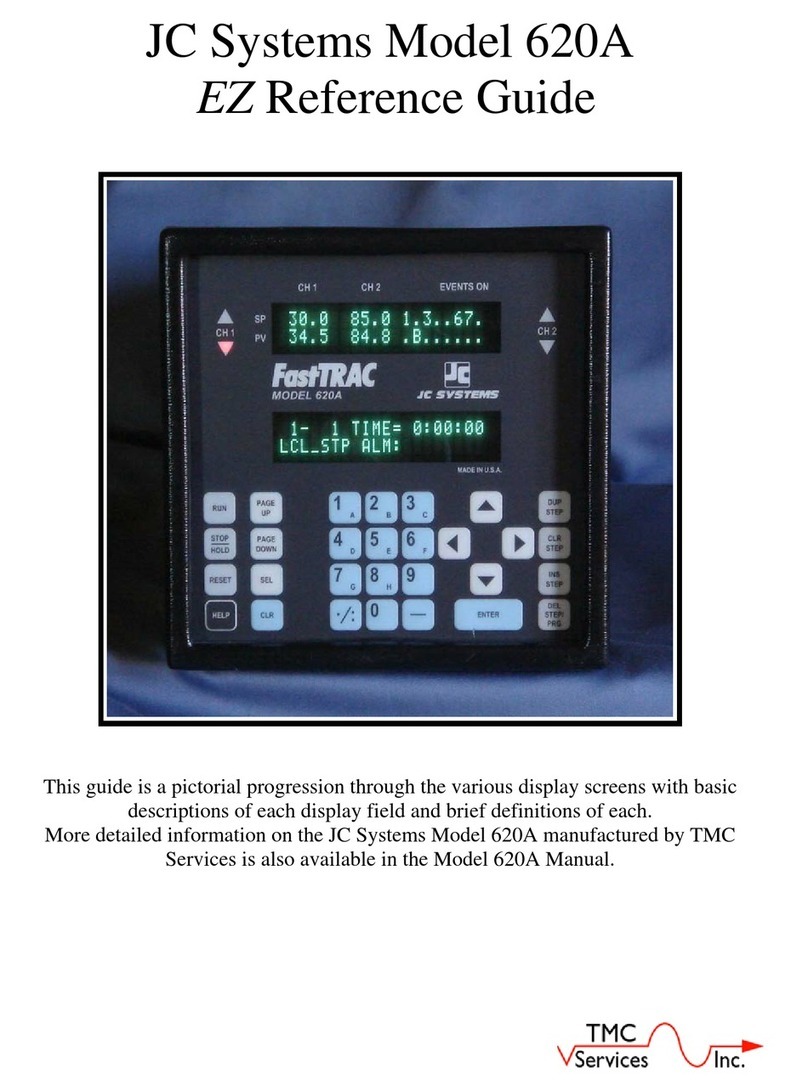
JC Systems
JC Systems 620A reference guide

Siemens
Siemens Simatic S7-300 Product information
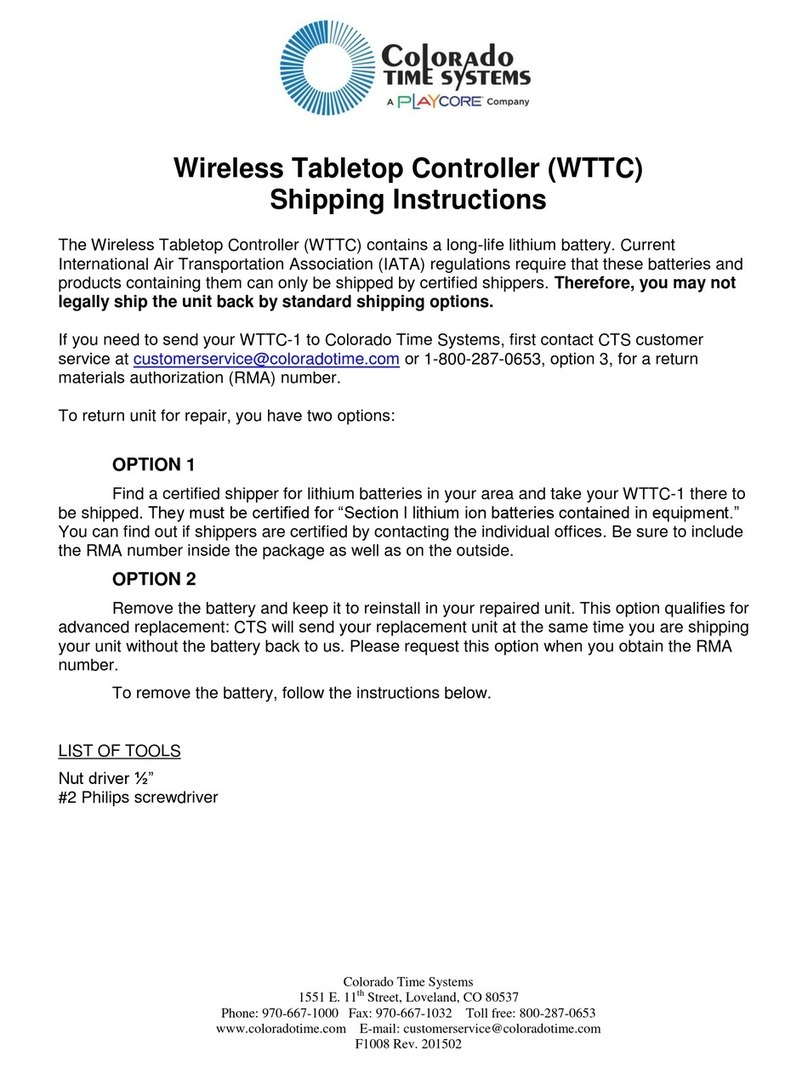
Playcore
Playcore Colorado time systems WTTC Shipping Instructions
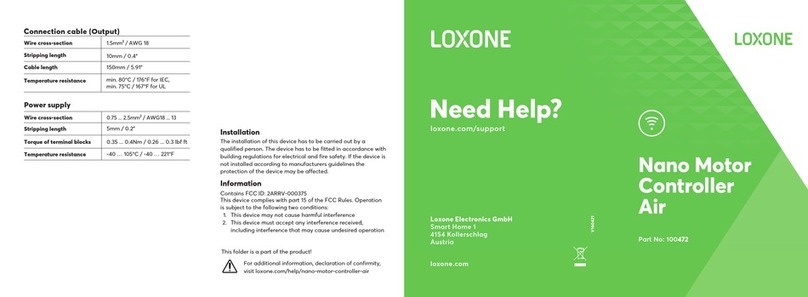
LOXONE
LOXONE Nano Motor Controller Air quick start guide
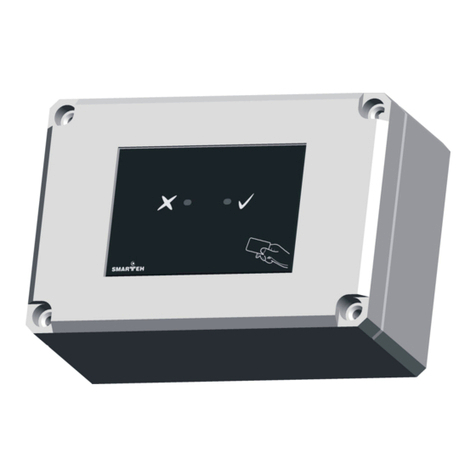
Smarteh
Smarteh LONGO LPC-2.CR2 user manual
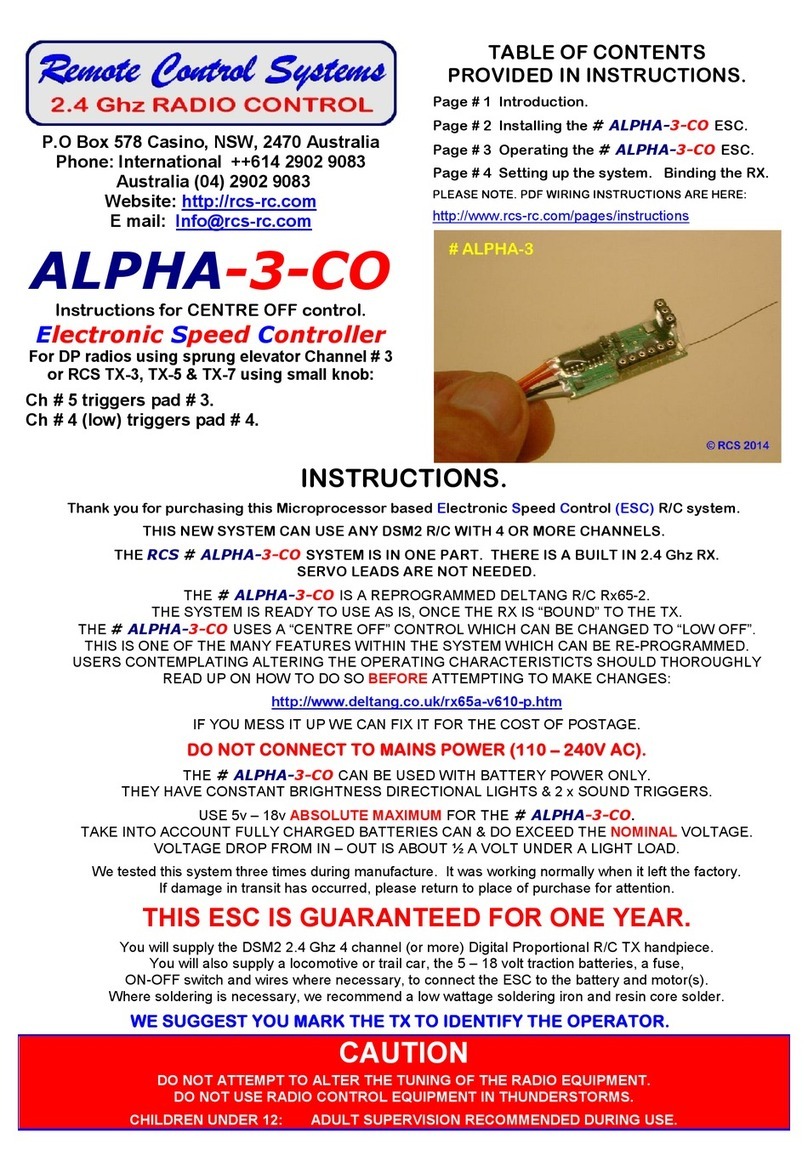
Remote Control Systems
Remote Control Systems ALPHA-3-CO quick start guide
